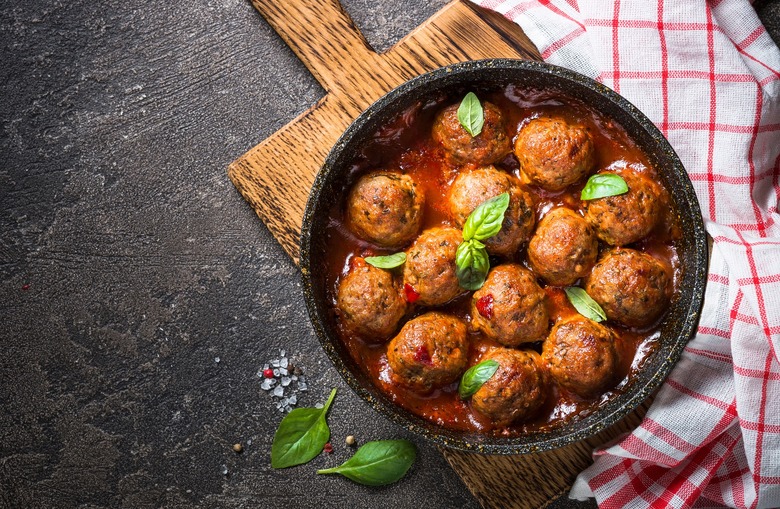What Is The Difference Between Italian And Swedish Meatballs?
The concept behind a meatball is fairly simple: it's just ground meat rolled into a ball and cooked. But just like with bread and dumplings, just about every culture has put its own twist on this dinnertime staple. And while some lesser-known meatball recipes might make the list of vintage foods no one makes anymore, Swedish and Italian meatballs remain very popular. But have you ever wondered what the difference is between the two, exactly?
101 Best Restaurants in America
Köttbullar, or Swedish meatballs, first appeared in a cookbook back in 1754, and they've been a staple in grandma's cooking ever since. These meatballs consist of beef mixed with pork or veal and seasoned with salt, pepper, onions and allspice. After being rolled into small (1 ounce, on average) meatballs, the dish is traditionally cooked in hot butter.
On the other hand, polpette, or Italian meatballs, generally consist of ground beef or veal. While Italian meatballs are also on the small side, they can be made with a wide range of additional ingredients, including egg, parsley, breadcrumbs and grated parmesan cheese. But typically only three to four ingredients are used in a single recipe.
The major difference between Swedish and Italian meatballs is what they're accompanied with. Swedish meatballs are traditionally topped with a creamy gravy and served with mashed potatoes and lingonberry sauce to cut through the richness, similar to how they're cooked at the two-Michelin-starred restaurant, Aquavit.
In Italy, on the other hand, meatballs are traditionally served as a snack, an appetizer or between courses, on their own without any sauce. This differs greatly from how they're enjoyed in America, where they're typically served with pasta and red sauce. And if you're looking for that classic comforting dish, be sure to try them at one of the best Italian restaurants in America.
